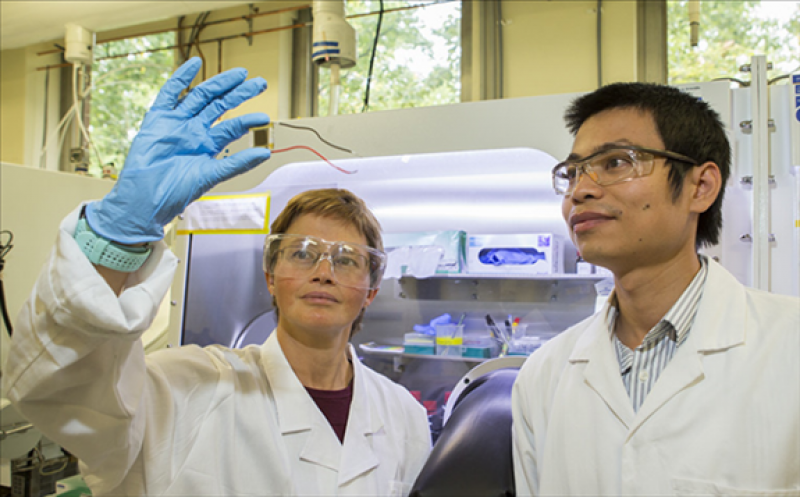
The Australian National University (ANU) has announced a new record for the conversion of sunlight into energy, moving the world closer to the future of solar technology.
The ANU team works on developing ‘tandem solar cells’, which involves stacking a perovskite solar cell on top of a silicon cell – or doubling up to squeeze more energy out of sunlight.
A perovskite solar cell is a new type of solar cell which uses organic and inorganic materials in a specially built structure that enhances light absorption. These cells can react to various different wavelengths of light to better harness the sun’s energy.
In contrast, silicon solar cells are made only from inorganic materials and can only absorb red light.
The researchers have set a new efficiency record of 27.7 per cent for mechanically-stacked perovskite-silicon tandem cells – meaning 27.7 per cent of sunlight is converted into energy.
Professor Kylie Catchpole says this would only need to improve slightly – to around 30 per cent – before the technology could be rolled out around the world.
“In comparison, typical solar panels being installed on rooftops at the moment have an efficiency around 20 per cent,” Professor Catchpole said.
“Silicon solar cells currently dominate the market, however the efficiency of silicon solar cells is going to reach the limit in the next five to 10 years.
“This result demonstrates the potential of tandem solar cells. They can make better use of certain parts of the solar spectrum – for example high energy blue photons. This will lead to more efficient and more cost effective solar cells and solar energy sources.”
Professor Catchpole says higher efficiency means each section of a solar panel is producing more power.
“The coverage area of solar panels is the main contributor to the cost. So if successfully commercialised this technology could lead to a significant reduction in the cost of solar electricity, as well as lower energy bills.”
The team is now working on achieving an even higher efficiency, as well as on further improving the stability of the new solar cells.
“The International Technology Roadmap for Photovoltaics predicts tandem solar cells will appear in mass production in 2023, so we’re very close,” lead researcher Dr The Duong said.
“This new efficiency result will help to improve the commercial competitiveness of this technology. It’s exciting to think that a new technology that has the potential to benefit the entire planet is being developed here in Canberra.”
The work has been financially supported by ARENA through the Australian Centre for Advanced Photovoltaics.